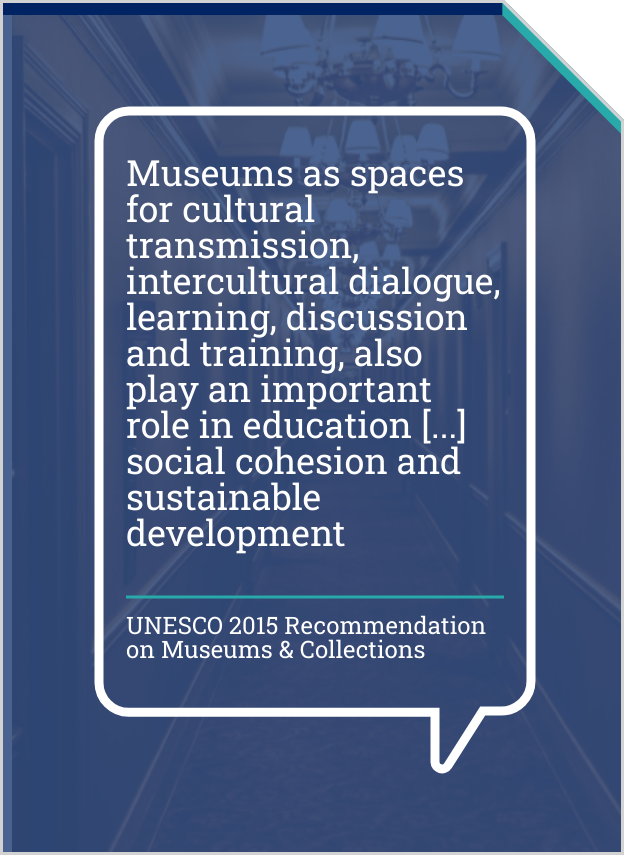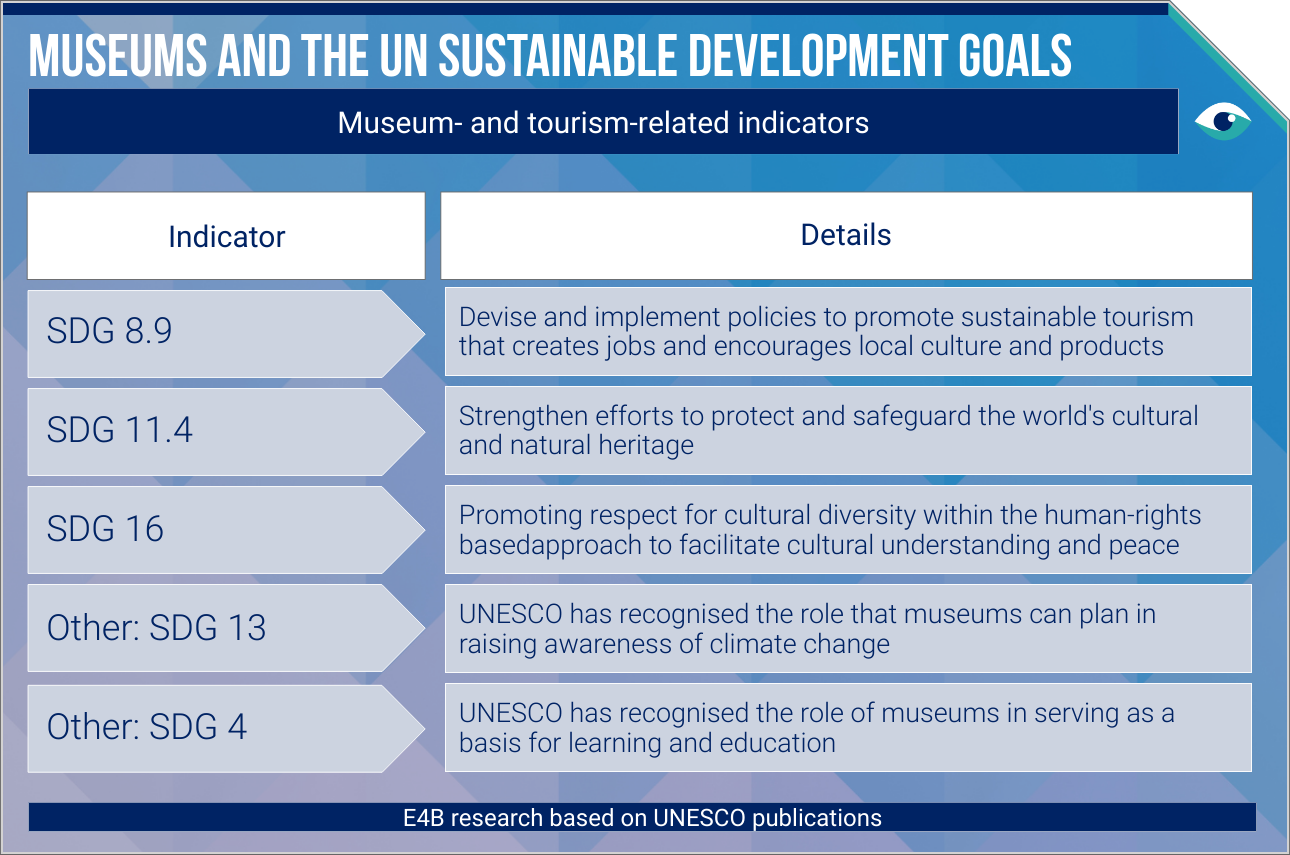UNESCO reports 104,000 museums among its 192 UN member states, though the meaning of what constitutes a “museum” varies across countries. The importance of museums is evident in their cross-cutting contribution to the 2030 Agenda. SDG#11 includes indicators for protecting cultural heritage, while SDG#8 covers the promotion of sustainable tourism. Some museum advocates also recognise a role in achieving peace under SDG#16. Notwithstanding their centrality to the 2030 Agenda, the UNESCO report indicates that almost 90% of museums were closed during the COVID-19. Post-pandemic, budgetary cuts and a slow recovery of visitor numbers are a cause for concern.

The cultural and economic significance of museums
Museums are critical cultural resources and tourism assets, but face a very different post-pandemic future
UN Sustainable Development Goals
Tourism (all industries)
AT A GLANCE
In 2023, UNESCO provided a timely report on progress against recommendations for the promotion and protection of museums.
During the pandemic-induced crisis for all forms of tourism, museums received little policy attention.
Museum-based tourism has the potential to significantly contribute to local economic activity and the quality of cultural life after the pandemic.

The role of digital resources
The UNESCO report recognises that the pandemic worsened the “digital divide” faced by African countries and small-island developing states (SIDS) regarding access to digital technology. Progress was made in digitising museum assets during the pandemic in some member states, presumably those with greater financial resources. Digital technology can help to safeguard cultural resources, but it can also enable wider dissemination and provide a pathway for museums to cope with physical closures.
Innovative funding needed
The report addresses the critical issue of museum resourcing. To fulfil their essential, UNESCO-inspired functions of preservation, research, education and communication, museums must consider innovative funding approaches. Successful museums in Europe, North America, and Australia have attracted financial support from a mix of government, corporate and individual sources. For developing countries, non-government grants are crucial, alongside efforts to generate more income from visitors linked to new experiences.

Smaller can be more successful
While museums need to consider their positioning relative to other cultural attractions locally and globally, a museum’s size does not appear to be an indicator of its success. Many smaller, well-run museums have found a market niche based on a creative concept. Improved data collection and monitoring is as relevant in improving visitor experience as it is in keeping a digital inventory of cultural assets.
A different future emerging
The pandemic significantly altered the operating context for museums. With post-pandemic public funding likely to be lacking, investment in preserving cultural assets and new digital experiences will require more emphasis on income from visitors, private-sector funding and, in developing countries, grants and technical assistance from development partners. With museums among the likely beneficiaries of broad-based improvement in education, higher incomes and urbanisation, there are incentives for museums to adapt, especially in rapidly growing developing countries.
FURTHER READING
- Museums and cultural policy (UNESCO)
- Museums and the Sustainable Development Goals (UN Department of Economic and Social Affairs)
- Inclusive Digital Interactives: Best Practices and Research (Smithsonian)
